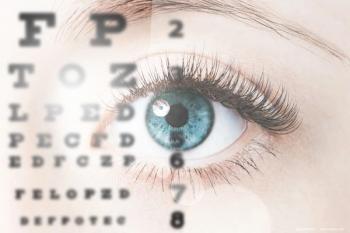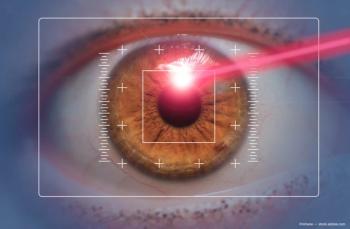
'I have pain and a little garbage in my eye'
Lenticular foreign bodies are not commonly encountered, accounting for 7% to 10% of all intraocular foreign bodies.
A 23-year-old man presented to the Bascom Palmer Eye Institute Emergency Room with a chief complaint of foreign body sensation in the left eye. The pain began 3 days prior after metal struck the patient, a mechanic's helper, in the face at work. The patient was hammering metal on metal without safety goggles.
Examination The patient's visual acuity was 20/20 OU without correction. Pupils were 4 mm OU and briskly reactive without an afferent pupillary defect. IOPs were 14 and 10 mm Hg. Extraocular movements were intact and visual fields were full to finger count. External exam was negative.
Ultrasound (Figure 2A) and CT (Figure 2B) of the orbits were significant for the metallic, lenticular foreign body that was visualized on slit-lamp examination. No other intraocular foreign bodies were identified.
Discussion Lenticular foreign bodies are not commonly encountered, accounting for 7% to 10% of all intraocular foreign bodies. The most serious complications include endophthalmitis and siderosis bulbi.
The natural history of lens capsule violation is unclear. The anterior capsule has a higher capacity for healing, given the subcapsular epithelium. If the capsular defect is <2 mm, the epithelium rapidly restores continuity. Defects larger than 3 mm tend to lead to lenticular opacity. Healing of the capsule limits passage of free ions and fluid that may lead to cataract formation. The anterior capsule may also spontaneously re-open, causing severe inflammation and secondary glaucoma.
Newsletter
Don’t miss out—get Ophthalmology Times updates on the latest clinical advancements and expert interviews, straight to your inbox.















































.png)


